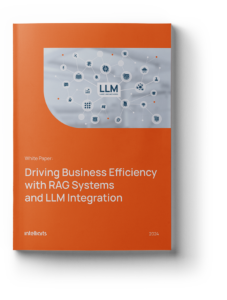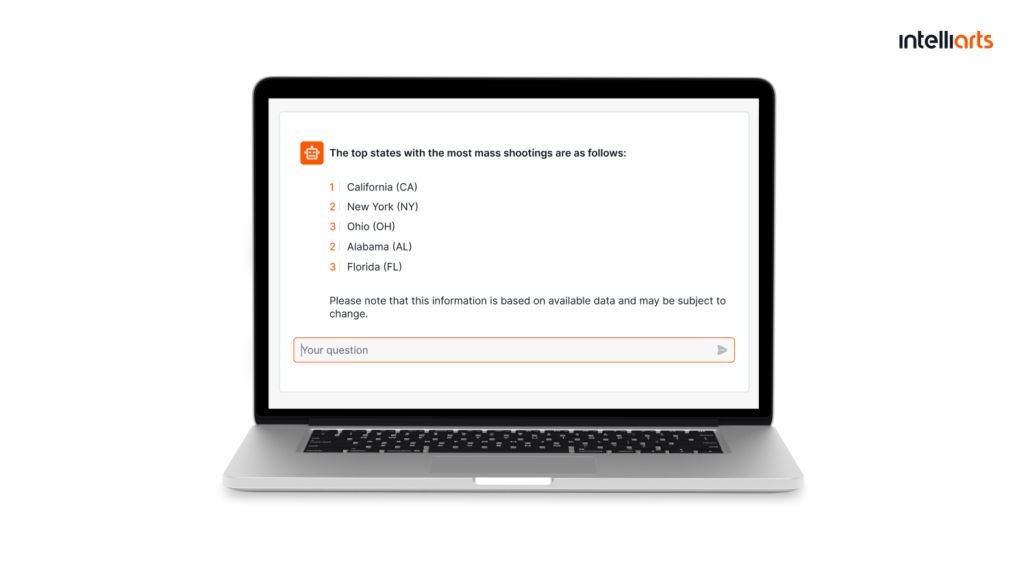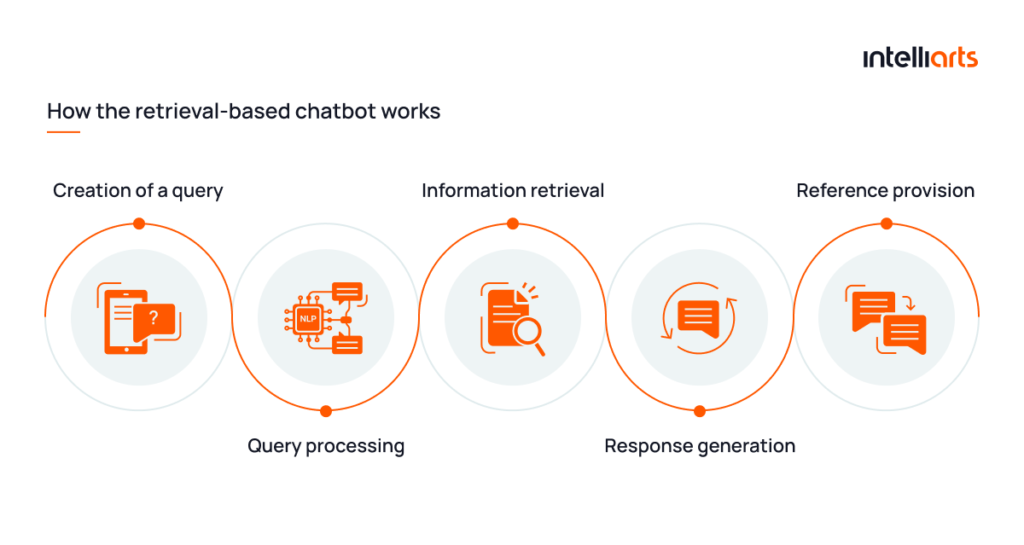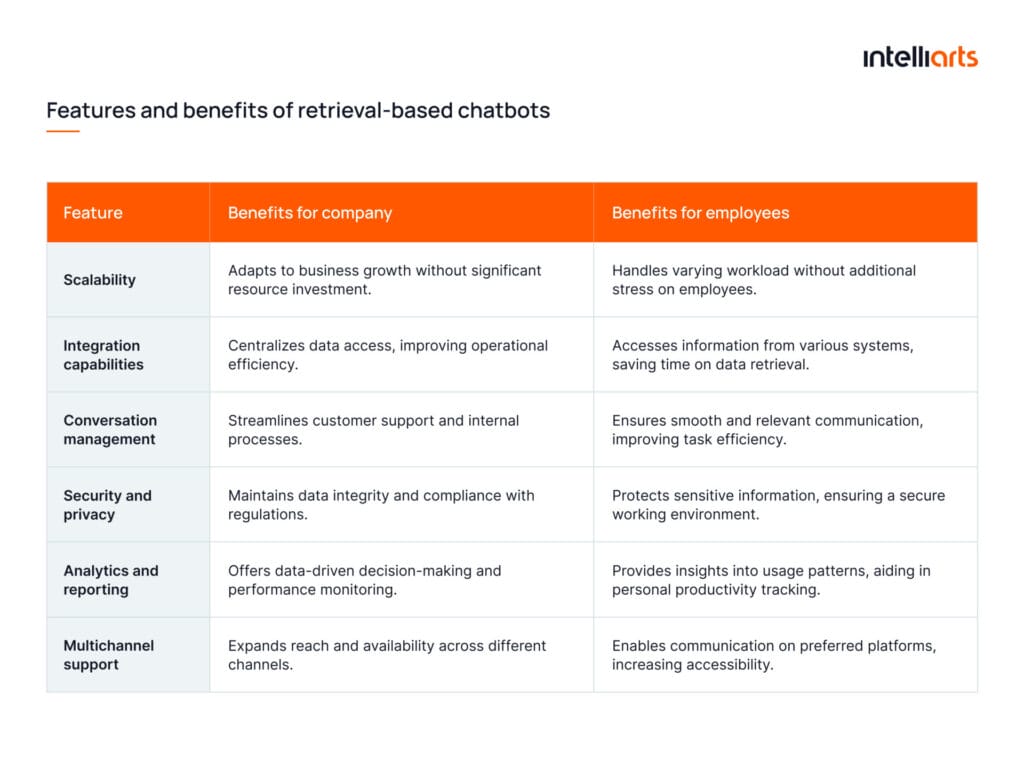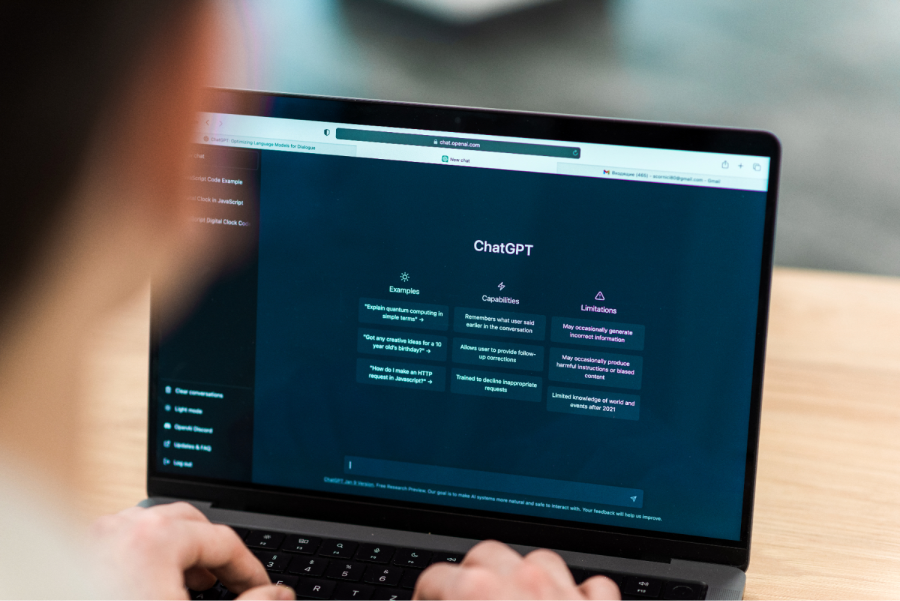The scientific report shows that office workers can spend up to 2 hours a day browsing their email boxes. Another study provides that workers tend to spend up to 18% of their working hours on useless meetings, they could’ve read summaries of which instead. In that regard, optimization of information retrieval processes can result in a substantial productivity increase, which definitely shouldn’t be overlooked.
One of the ways to simplify the retrieval of information is to utilize chatbots that can conduct searches based on user queries, which is both convenient and effective.
In this post, you’ll discover the aspects of chatbot information extraction and the features and benefits of the chatbot. Besides, you’ll review the retrieval-based chatbot case by Intelliarts and explore the step-by-step chatbot implementation procedure.
The need for efficient information retrieval in modern workplaces
Modern businesses are largely about gathering and using vast amounts of data. So, ensuring that employees can swiftly retrieve the data and insights they need leads to:
- Making informed decisions
- Enhancing customer service
- Increasing efficiency
- Fostering collaboration
- Staying competitive
Here are some of the challenges related to using traditional retrieval systems, such as databases or file systems with conventional search engines, library catalogs, archival systems, etc.:
- Time-consuming manual searches
- Fragmented data sources
- Inconsistent data quality
- Limited search capabilities
- Difficulty in accessing historical information
- Inefficient search systems
- Storing information in isolated environments
- High volumes of data
- Lack of contextual understanding
- User interface and accessibility issues
As possible to observe, the conventional ways to retrieve information are not ideal for many reasons. That’s why to achieve better productivity in the workplace, companies start considering alternative ways to empower employees to extract necessary data.
Overview of Intelliarts retrieval-based chatbot solution
Recently, the Intelliarts team was approached by a non-governmental organization that advocates for gun control and combat against gun violence. They requested the development of a solution that would provide quick and easy access to information from the organization’s extensive knowledge base.
You can discover comprehensive details about the retrieval chatbot case by Intelliarts from our success story.
The solution Intelliarts created was a retrieval-based system enabled by GPT-4 Generative AI and wrapped as a chatbot.
This enterprise RAG (Retrieval-Augmented Generation) solution enhances business information retrieval efficiency. Here are the key features of the Intelliarts’ chatbot:
- Natural Language Processing (NLP): The chatbot uses GPT-4 to understand and interpret free text queries in natural language.
- Data retrieval functionality: The chatbot can efficiently search and extract relevant information from the organization’s internal database.
- Customized responses: The chatbot for information retrieval is designed to mimic the NGO’s tone of voice, emphasizing victims over guns or criminals.
- Reference provision: The chatbot provides references for the retrieved information, allowing users to verify the data and explore topics in more depth.
The integration capabilities of the chatbot are worth mentioning, too. The solution is seamlessly connected with the company’s knowledge database, enabling it to access and retrieve information quickly. This integration ensures that the chatbot can handle dynamic updates to the database and provide the most current information to users.
As for business outcomes of implementing the chatbot solution, it has reduced the time needed for search and information analysis from hours to minutes. Besides, it notably enhanced employee satisfaction.
The algorithm of the retrieval-based chatbot:
The chatbot operates using a combination of natural language understanding and information retrieval algorithms. When a user submits a query, the chatbot processes the text to understand the intent and context. It then searches the knowledge base for relevant information and presents it in a user-friendly format.
How it works: The Intelliarts’ chatbot in action
Let’s walk through a scenario to illustrate how our chatbot operates:
- Creation of a query: An employee of the NGO asks the chatbot, “What are the latest statistics on gun violence in urban areas?”
- Query processing: The chatbot uses NLP to understand the query and determine the nature of the request. It supports several request options, which are report, table, and general one. Then, the chatbot identifies key terms such as “latest statistics,” “gun violence,” and “urban areas.”
- Information retrieval: The chatbot searches the organization’s database for recent data on gun violence in urban settings.
- Response generation: The chatbot compiles the information and generates a response in the NGO’s preferred tone, focusing on the impact on victims. For example, “In recent studies, urban areas have seen a significant increase in gun violence, affecting numerous families and communities.”
- Reference provision: The retrieval chatbot provides the summary as the answer to the query and links to the studies or reports from which the statistics were derived, allowing the employee to explore the topic further.
It’s worth noting that the chatbot can mimic the tone of voice used in the query. If the NGO employee puts a higher emphasis on victims in the query rather than criminals, so will the chatbot.
Looking for a development agency to create a tailored chatbot for your business? Reach out to Intelliarts, and let’s discuss.
Key features and benefits of retrieval-based chatbots
In the infographic below, the Intelliarts team distinguishes the main specificities of retrieval chatbot with AI and reveals how one or another characteristic results in specific business benefits.
You can observe that implementation and usage of the features provided in the above table translate into a range of value-adding benefits for the employees and the company. At the same time, the listed benefits can result in lower operational expenses, better business operation outcomes, and higher satisfaction of employees.
It’s also worth mentioning that retrieval-based chatbots are one way of solving the issues of tedious information search and extraction processes.
At the beginning of 2024, Google presented a Circle to Search Functionality, which allows a user to quickly search for anything via the Google search engine with a simple gesture without any additional app needed. Circle-to-Search is another convenient feature offering a better user experience which is likely to get high usage over the next few years.
Ensuring security and privacy in retrieval-based chatbot systems
Since data security and user privacy are raising concerns, it’s essential to understand how retrieval-based chatbot systems can ensure proper data handling, restrict users from retrieving data they don’t have access to, and prevent data leakages:
- Access control: Integrating with authentication systems to restrict data access based on user permissions.
- Data encryption: Encrypting data in transit and at rest to prevent unauthorized access.
- Secure storage: Protecting stored data with encryption to safeguard against breaches.
- Audit trails: Logging interactions to monitor for suspicious activities and ensure accountability.
- Regular security assessments: Conducting tests to identify and address vulnerabilities.
- Data minimization and retention: Collecting only necessary data and enforcing retention policies.
These practices are set according to the HIPPA, GDPR, PDPA, and other standards regulating the secure handling of user and business data.
Need a secure, business-oriented chatbot solution? Drop the Intelliarts AI team a line and let our engineers contribute to your best project.
Implementation and ease of use of retrieval-based chatbot systems
Probably you wonder whether the development and integration of a chatbot is a complex intervention and whether you will be able to handle the technical aspects and integrate the solution into your day-to-day operations.
Integrating and using a chatbot in daily operations have become increasingly accessible and beneficial due to advancements in technology and a better understanding of user needs. Here’s a more detailed look at why it’s easy and advantageous:
- Full compatibility with existing systems
- Connectivity with external APIs
- Customization opportunities
- Scalability options
- Intuitive, user-friendly interface
To ensure that your team can utilize a custom solution to its fullest extent, the Intelliarts team, as software development professionals, can offer:
- Onboarding and support
- Training materials and workshops
- Updates per request
- Timely feedback
So, partnering with a trusted provider can ensure that the retrieval-based chatbot will be integrated in the proper way on both technical and business levels.
Final take
Retrieval-based chatbots like the described solution by Intelliarts offer modern businesses a powerful tool for efficient information retrieval, enhancing productivity and decision-making. By leveraging natural language processing, integration capabilities, and advanced security measures, these chatbots provide quick and easy access to vital data. With the support of a trusted provider, companies can seamlessly integrate and use these chatbots in daily operations, ensuring a secure, user-friendly experience that drives business success.
Should you need to create an information retrieval chatbot or another assistance from an AI and ML software development company, don’t hesitate to reach out to Intelliarts. We have been present on the market since 1999, delivering software solutions with constantly excellent outcomes, proven by a high customer return rate of 85%. Our team of 100+ engineering professionals is ready, willing, and able to contribute to your best development project.
FAQ
1. How do you make a retrieval-based chatbot?
To make a retrieval-based chatbot, you need to build a database of predefined responses and use algorithms to select the most relevant response based on the user’s input. This type of chatbot relies on matching the input to existing answers.
2. What is the difference between a generative chatbot and a retrieval chatbot?
The difference between a generative and retrieval chatbot is that a generative chatbot creates new responses based on the input using natural language generation techniques, while a retrieval chatbot selects a response from a predefined set.
3. What are the advantages of retrieval-based chatbots?
Retrieval-based chatbots offer quick and consistent responses, making them suitable for handling frequently asked questions and providing standardized information.
